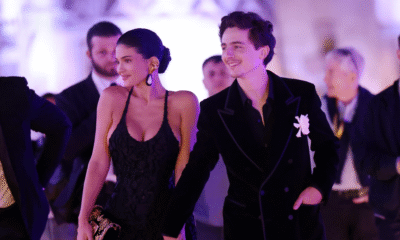E! News
Anna Wintour Is Stepping Down as Editor-in-Chief of Vogue — But This Isn’t the End of Her Reign
After nearly four decades of defining fashion’s visual language, Anna Wintour is stepping down as Vogue’s editor-in-chief, marking the end of an era in fashion media—but it’s not a farewell.
On June 26, multiple reports confirmed that the 74-year-old British powerhouse, often credited with transforming Vogue into a global fashion authority, is stepping down from her editor-in-chief post after 37 years. The announcement came during a morning staff meeting where Wintour, in her trademark sunglasses and steely poise, revealed she’s shifting roles as part of Condé Nast’s global restructuring.
“Anybody in a creative field knows how essential it is never to stop growing,” Anna Wintour told staff. “My greatest pleasure now is helping the next generation of impassioned editors storm the field with their own ideas.”
Though she’s stepping back from the iconic title that inspired The Devil Wears Prada’s Miranda Priestly, Anna Wintour remains deeply entrenched in the Condé Nast empire. She’ll continue as global editorial director of Vogue and chief content officer at Condé Nast, overseeing a vast portfolio that includes GQ, Vanity Fair, WIRED, and Teen Vogue.
No New Editor-in-Chief—And That’s By Design
Interestingly, Vogue will no longer have an “editor-in-chief.” Instead, Wintour’s successor will be known as “head of editorial content,” reflecting Condé Nast’s shift to a decentralized, global editorial structure. The new appointee will report directly to Anna Wintour, who emphasized that she’s not vacating her office—or her beloved Clarice Cliff pottery—anytime soon.
This move aligns with her recent comments about working behind the scenes to support local editions of Vogue and lead cultural tentpoles like the Met Gala and Vogue World. Her self-proclaimed titles of tennis and theater editor in perpetuity also remain intact.
View this post on Instagram
A Legacy That Changed Fashion Forever
Since joining Vogue in 1988, Anna Wintour revolutionized magazine publishing by fusing celebrity culture and high fashion—an approach that’s now the norm. She was also the first to put celebrities like Madonna and Kim Kardashian on the magazine’s cover, helping mainstream fashion to a global audience.
Her presence extended beyond print. Anna Wintour influenced Hollywood, the political world, and philanthropy. And yes, she was the inspiration for Meryl Streep’s icy portrayal of Miranda Priestly in The Devil Wears Prada—a character she once described as “not entirely inaccurate.”
So, Why Now?
Anna Wintour’s exit comes amid Condé Nast’s global editorial overhaul, which favors cross-market collaboration and centralized creative leadership. With roles expanding and media landscapes shifting, stepping away from her day-to-day editorial duties allows Wintour to wield even greater influence across borders.
And while she’s stepped down from the top of Vogue, make no mistake—Anna Wintour still runs the fashion world.








































Pingback: From American Gigolo to an Empire: Remembering Giorgio Armani